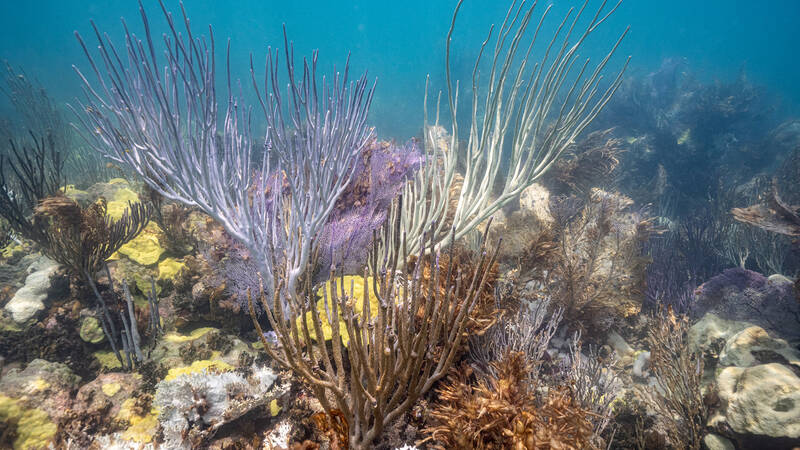From the mountains of Hawaii to the prairies of the East Coast, funding from the 2022 Inflation Relief Act prepares our national parks to combat the greatest threat to the National Park System: climate change.
The Inflation Reduction Act (IRA) of 2022 was a landmark bill that invested an unprecedented $700 million in national park infrastructure projects to help parks adapt to new climate realities.
These IRA-funded projects, announced last year, directly respond to Americans’ concern that if more is not done to address climate change, some of our most treasured and culturally important national parks as we know them today will be lost. In fact, 4 out of 5 Americans support IRA funding for the National Park Service to prepare parks from floods, fires, droughts and diseases caused by climate change. Good news? Since being signed into law, the National Park Service has revealed its plans for 100% of its IRA funding. These resources have allowed parks across the country to plan, coordinate and publicize work on projects that respond to climate science’s call to action and pave the way for climate-sensitive restoration and protection against various climate events.
Learn more about science-backed solutions that are transforming gardens to become more resilient to climate change.
Fish and Wildlife
Some of the most amazing experiences in national parks involve their unique animals. Haleakala National Park in Hawaii is home to a variety of plants and animals found nowhere else in the world, including more than 100 that are listed under the Endangered Species Act. That is the most protected species in any other national park in the country. But due to the effects of climate, the flora and fauna of the park are more exposed to threats that lead to extinction. This includes Hawaiian honeyeaters, a group of common and common birds found in the park.
Only found on the island of Maui, six species of Hawaiian honeyeater are threatened with extinction within ten years. The most endangered species, the kiwikiu (also called the Maui parrotbill) and the ʻākohekohe (also called the crested honeycreeper), are found only on the eastern slopes of Haleakala. The multi-agency partnership – Birds Not Mosquitoes – will use $2.9 million in IRA funding to suppress the non-native mosquito population that transmits avian malaria, a disease that is leading to the extinction of these historically and culturally important birds. In fact, researchers date the arrival of the ancestors of honey harvesters in Hawaii around 5-6 million years ago, when Niʻihau and Kauaʻi, the oldest islands of the present Hawaiian Islands, were still young and new. The honey producer served as guardian to the Paliuli chief, La’ieikawai.
More than 311 types of invasive species are found in America’s national parks, which threaten wildlife and plants. The invasive hemlock wooly adelgid has killed hemlock trees throughout the Shenandoah and Great Smoky Mountains national parks and along the Blue Ridge Parkway. Lionfish thrive in Biscayne National Park, adversely affecting native reef fish populations and reef ecosystems. IRA funds science and research to address threats to species that depend on fragile, carefully balanced habitats, from the Taylor checkpoint in Olympic National Park to the Shenandoah salamander in Shenandoah National Park.
Cultural Resources
Weather, sunlight, humidity and other natural factors have always posed challenges in protecting cultural resources such as rare statues and documents in national parks across the country. But with climate change projections showing more unpredictable and extreme weather, including extreme fires and droughts, historic buildings, landscapes and archaeological sites are at particular risk.
“The scariest part about cultural resources facing these impacts of climate change is that once they’re gone, they’re gone forever,” said Chad Lord, NPCA’s senior director of environmental and climate change policy.
Alaska artifact – Gates of the Arctic

A hollowed-out bone bead was found in an archaeological excavation of a late Inupiat village site at Gates of the Arctic National Park and Preserve in 2004.
NPS
Cultural resources depend on funding and workers to help them cope with climate change. Unlike natural systems, these structures require robust management based on complex climate conditions to predict with the best and latest science. In rocky Alaska, for example, national parks face the effects of climate change up to three times more than the global average. More than $10 million of the IRA’s parks funding will go to Alaska, which has been home to Native Americans for thousands of generations and holds more than 51 million acres of parks.
$2.5 million is dedicated to providing critical services to cultural resources at risk from climate change, such as historic gold mining sites, cemeteries, trails and artifacts at Denali, Gates of the Arctic National Park and Preserve, and other Alaskan parks. Collaboration with Indigenous Tribes, who rely on the landscape of the park to carry out their traditional culture and livelihoods, is at the heart of these projects.
This infusion of IRA funding will help protect cultural heritage in all national park areas by prioritizing those resources that are most at risk.
Grasses and Forests
Grasslands are the most threatened ecosystem in the United States due to the conversion of this ecosystem to other land uses. Yet we need them because they absorb about 34% of the world’s carbon stock, prevent soil erosion, improve water quality, reduce runoff in streams and provide great opportunities for outdoor recreation. With funding from the bipartisan Infrastructure and Inflation Reduction Act, 35 parks from Mississippi to Maine have ongoing projects to protect these important natural resources. This marks a major victory, not only for the park but for the many species — such as the eastern meadowlark and prairie dog — that depend on them.
At Antietam National Battlefield, Natchez Trace Parkway and New River Gorge National Park and Preserve, grasses also hold historical and cultural significance to the Revolutionary and Civil War. In the Cuyahoga Valley, IRA funds projects that focus on cultural resources, increasing park access and landscape restoration.
Chris Davis, a plant ecologist at the park, says, “The Affordable Care Act funding, that’s really what gives us the ability to do this. … We do a very good job of local funding [for] many projects. But we have a lot to do. The Inflation Relief Act funding has really given us the ability to do this project that we otherwise wouldn’t have been able to do.”
Americans from both sides of the political spectrum have expressed support for this work. In fact, the 2022 NPCA poll found a bipartisan majority — 79% of respondents — supported funding the National Park Service to rebuild parks with green infrastructure to ensure parks are accessible and enjoyable for generations. the future.
“And so … a bipartisan vote for the IRA … [is] prove to people in our industry. They let us know that people are listening,” says Crystal Davis, NPCA’s Midwest Regional Senior Director. “This is something that should be prioritized, that legislators care about these issues and understand the impact on their state.”
These projects across the East ensure these ecosystems are preserved and enhanced so that these important places, and their wildlife and history, can live on.
Coastal Parks
With 88 national parks along our coasts, rising sea levels along with stronger and more frequent hurricanes and threats to marine life are expected to change parks as we know them. And along some of these changing coastlines, coral reefs, which exist in 10 national parks, have some of the highest biodiversity of any ecosystem. Coral reefs provide habitat for approximately 25% of all known marine life. And the Florida Keys alone protects more than 6,000 marine species in a barrier ecosystem that connects many protected areas, including Biscayne and Dry Tortugas National Parks. In addition, studies by the US Geological Survey and the University of California Santa Cruz showed that US coral reefs annually provide flood protection for more than 18,000 Americans and coastal infrastructure worth $1.8 billion.

5 Reasons We Need to Save Our Coral Reefs
Coral reefs help the living organisms that abound in our oceans withstand the effects of climate change. It also protects communities from severe storms and hurricanes. What happens to corals when 40% of…
See more ›
Last summer, the temperature of the water basin grabbed the headlines as 40% of the world’s oceans suffered from an ocean heat wave and coral bleaching. Fortunately, more than $5 million in IRA funding will support conservation efforts to protect and restore the park’s reefs that support humans and marine life alike. Using more than 250,000 acres in six parks, this IRA project will improve endangered coral habitats, support economically important species, ensure coastal protection and contribute significantly to the tourism-driven economy. These stores include:
- Biscayne National Park
- Buck Island Rocks National Monument
- Dry Tortugas National Park
- Salt River Bay National Historic Park and Ecological Reserve
- Virgin Islands National Park
- Virgin Islands Coral Reef National Monument
“These areas are full of marine life, but they also protect our communities from disasters and hurricanes,” said Sarah Barmeyer, Vice President of Conservation Programs. “Seeing these projects focus on what’s inside and outside the park shows how far we can go when we protect landscapes with the best science available. I don’t know about you, but that gives me hope.”
Fields Can Flourish and Lead the Way
Across the country, the Inflation Reduction Act has provided unprecedented opportunities for national parks to address the unprecedented challenges of climate change. To date, the adoption of the IRA marks the strongest climate investment ever made in the National Park System. It’s still not enough. As we face increasingly frequent and severe climate events — from wildfires threatening the oceans to rising sea levels past the community where Harriet Tubman spent her childhood — parks need continued funding and support.
“National parks need us more than ever,” Mr. said. “To tackle climate change with our best resources, we need our national parks to thrive and lead the way. When we look at IRA projects, we are seeing some of the first examples of how parks can model important climate action — and how funding goes when placed in the hands of the National Park Service to support parks and the communities that love them.”
#AntiInflation #Act #Prepares #National #Reserves #Climate #Change